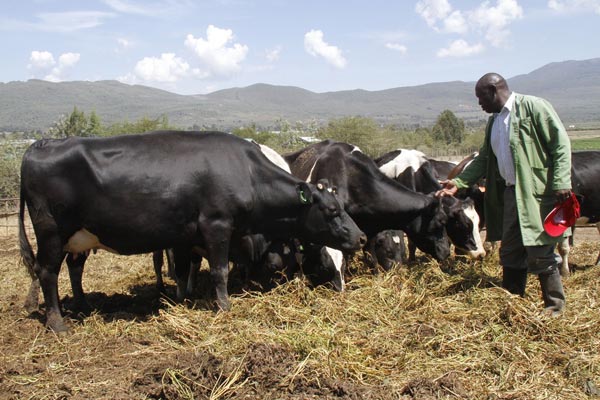The following analysis is by Livestock Expert Dr. Mary Muchunguh.
Faint heart never won fair lady, sages said. One has to be persistent to reap the benefits of his labour.
For dairy farmers, extra effort is required to enjoy good milk production. Some farmers sing to their animals while others allow them to watch TV.
It is, however, important to note that healthy animals can never be a let-down.
Dairy farmers need to apply Good Agricultural Practices as outlined below:
NUTRITION
A dairy animal’s health and productivity, as well as the quality and safety of its milk, depends largely on providing the right feeds and water.
The farmer must ensure feeds are well-balanced.
Fibre, proteins, energy and minerals should be part of the primary constituents of the diet.
Grasses and legumes are good sources of protein, while minerals may be sourced from commercial salt licks.
However, to reach a cow’s optimal milk production, additional sources of energy may be obtained from commercial feeds.
Clean water must always be readily available. A lactating cow drinks up to 120 litres of water per day.
ANIMAL HEALTH
Unlike beef cattle farmers, dairy farmers have to raise the bar in relation to disease management. Dairy animals are extremely vulnerable to heat and wet housing conditions.
Poor hygiene especially during milking sessions increases susceptibility to contracting mastitis.
An infected cow will definitely have reduced milk production and incur the farmer more costs.
Thus, farmers need to be up-to-date with their animals’ health records. More importantly, ensure that you use only prescribed medication as directed by veterinary office.
A good dairy farmer must always stay a step ahead of diseases by regularly checking their animals. Early detection is crucial.
Clear, dry and well-ventilated housing conditions are necessary. Wet floors will cause foot rot and poor ventilation could result in hot and humid conditions that will increase the chance of the animal contracting mastitis and other infectious diseases.
These humid and hot conditions are also favourable for many disease vectors. Farmers should put in place disease-entry prevention measures like footbaths to maintain high level of bio-security.
MATCHING BREEDS TO ENVIRONMENT
Choose animals that are well-suited to the production systems and environments of your region. Sometimes farmers purchase and attempt to rear animals that do not suit production systems.
For example, a farmer who attempts to raise a Holstein–Friesian cow in an extremely hot and humid area while practising open grazing should not expect good yields.
This animal will be exposed to several challenges such as disease, heat stress and poor quality feeds.
When the same dairy cattle breed is reared in higher altitude and cooler areas, it will have improved productivity. For hot areas, one should keep Fleckvieh, a high-yield dual purpose breed.
This animal is hardy and well-adapted to several environments. It is important that farmers seek expert and professional advice before purchasing dairy animals to get the most suitable breeds.
ANIMAL WELFARE
Most farmers take animal welfare for granted.
Dairy animals should be treated well based on five key freedoms namely freedom from hunger and thirst, freedom from fear, freedom from discomfort, freedom from pain and freedom of movement and to engage in normal animal behaviour.








